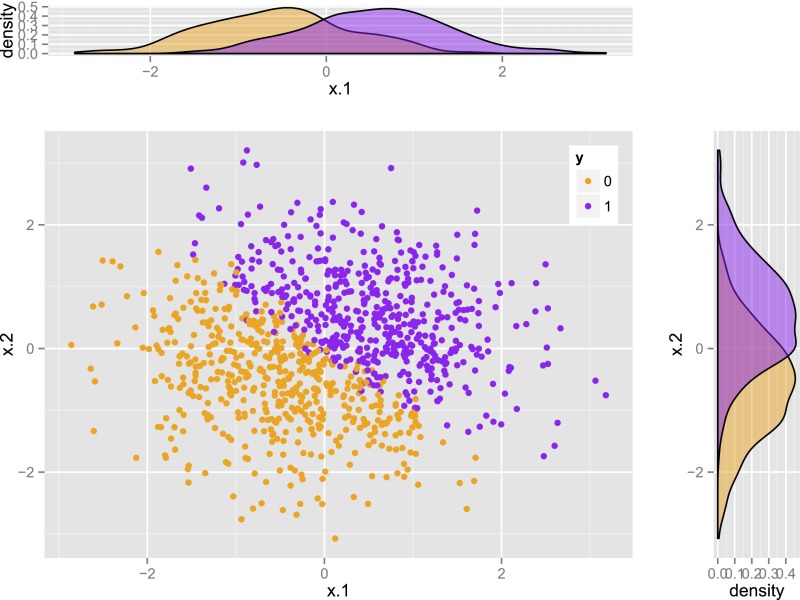Joel et al. (1) discuss the sexual dimorphism in human brains. Using various datasets of imaging data and personality traits, they find that no single variable can separate human males from females. This is in contrast to genitalia-related data, which easily separate genders.
We wish to address a known phenomenon in multivariate statistics by which groups may be perfectly separable, even if no single variable (in the original space) may do so. Fig. 1 demonstrates this phenomenon. Two groups are perfectly separable when considering both variables but inseparable when considering only one variable at a time.
Fig. 1.
Univariate overlap with multivariate separation.
How can one assess the multivariate overlap between groups? One simple way, certainly not unique, is by using a classification approach. If a binary classifier has good performance, then clearly the groups have restricted overlap. Put differently, a classifier can only achieve perfect classification if the data points are well separated (note the converse does not hold: the data may be well separated, even if a particular classifier is no better than random guessing).
By fitting a linear support vector machine (2) to the voxel-based morphometry data reported in ref. 1 we achieve a cross-validated misclassification rate of about 80% (depending on the random splits). We thus conclude that, whereas the univariate brain attributes (voxel morphometry) are bad predictors of gender, the multivariate brain morphometry is a very good predictor of gender.
Given our empirical evidence and the multivariate intuition depicted above, we cannot help but disagree with the concluding statement in the abstract of Joel et al. (1), “… human brains do not belong to one of two distinct categories: male brain/female brain” or their statement that “…brains do not fall into two classes, one typical of males and the other typical of females.…”
A simple multivariate analysis using the same data suggests quite the opposite: Brains are indeed typically male or typically female.
Footnotes
The author declares no conflict of interest.
References
- 1.Joel D, et al. Sex beyond the genitalia: The human brain mosaic. Proc Natl Acad Sci USA. 2015;112(50):15468–15473. doi: 10.1073/pnas.1509654112. [DOI] [PMC free article] [PubMed] [Google Scholar]
- 2.Hastie T, Tibshirani R, Friedman J. The Elements of Statistical Learning. Springer; Berlin: 2003. [Google Scholar]



